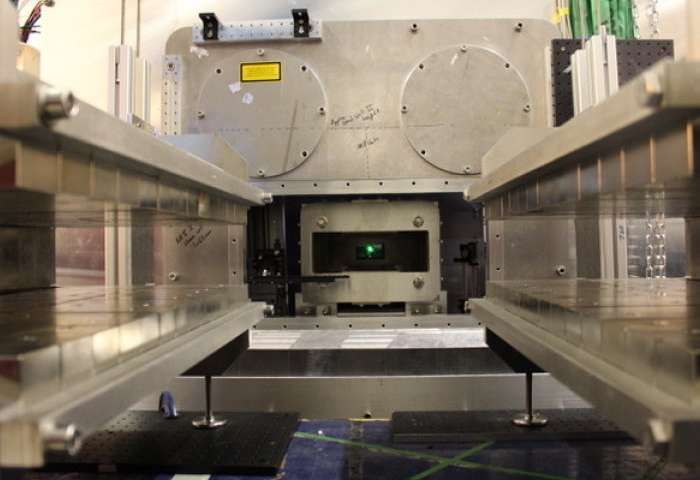
Eight-four years ago, scientists Gregory Breit and John Wheeler theorized that it would be possible to turn light into matter. However, it was long thought that proving this would be beyond the capabilities of scientists.
Now physicists from Imperial College London (ICL) in the U.K. are attempting to prove the impossible in a potentially groundbreaking experiment.
The theory, known as the Breit-Wheeler process, states that smashing together two particles of light, or photons, would create matter in the form of a negatively charged electron and its antiparticle, a positron. Both electrons and positrons have a small mass unlike photons, which have no mass.
So far, experiments attempting to prove the Breit-Wheeler process have not been successful as they have required the use of massive high-energy particles.
But in 2014, physicists Steven Rose, Stuart Mangle and their colleagues from ICL proposed plans for an experiment that did not rely on these additional particles. Now, this experiment is underway.
Creating matter from light would be "a pure demonstration of Einstein's famous equation that relates energy and mass: E=mc2, which tells us how much energy is produced when matter is turned to energy," Rose said in a statement. "What we are doing is the same but backwards: turning photon energy into mass, i.e., m=E/c2."
The team's setup involves two high-power laser beams that contain the photons. The lasers are pointed at two separate targets inside a chamber consisting of a complex system of optics and magnets that will deflect the photons from both sources in such a way that they will collide.
The scientists will then look for the creation of positrons as a result of the collision, which, if detected, would be a sign that the experiment was a success (though they will have to conduct careful checks to make sure that particles were not being created by any background process).
"When Gregory Breit and John Wheeler first proposed the mechanism in 1934, they used the then new theory of the interaction between light and matter known as quantum electrodynamics (QED)," Mangle said. "Whereas every other fundamental prediction of QED has since been demonstrated experimentally, the 'two-photon Breit-Wheeler process' has never been seen."
"If we can demonstrate it now, we would be re-creating a process that was important in the first 100 seconds of the universe and that is also seen in gamma ray bursts, which are the biggest explosions in the universe and one of physics' greatest unsolved mysteries."
Uncommon Knowledge
Newsweek is committed to challenging conventional wisdom and finding connections in the search for common ground.
Newsweek is committed to challenging conventional wisdom and finding connections in the search for common ground.
About the writer
Aristos is a Newsweek science reporter with the London, U.K., bureau. He reports on science and health topics, including; animal, ... Read more
To read how Newsweek uses AI as a newsroom tool, Click here.








